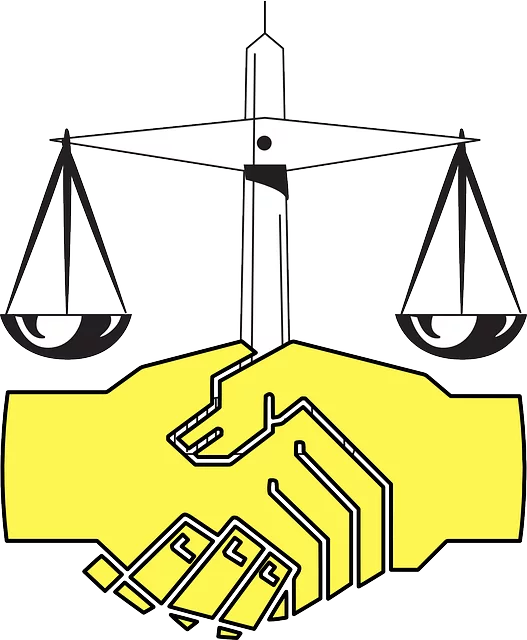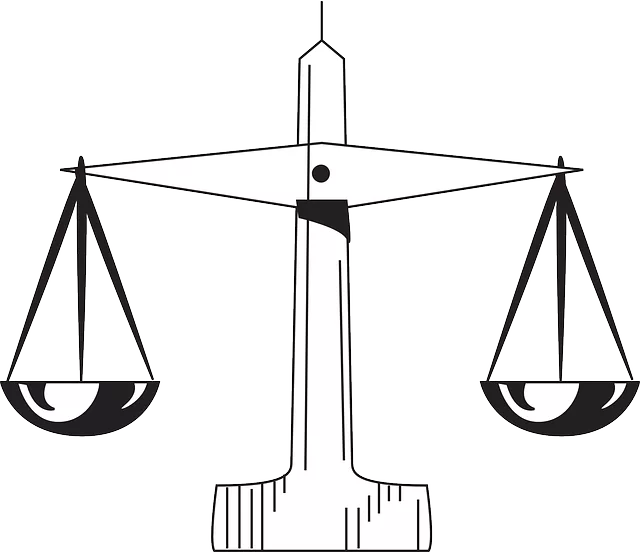Category: Highlands Ranch Colorado Workers’ Compensation
Highlands Ranch Colorado Workers’ Compensation: A Comprehensive Overview
Introduction
In the dynamic landscape of industrial safety and employee welfare, “Highlands Ranch Colorado Workers’ Compensation” stands as a robust framework designed to protect workers across various sectors. This article aims to delve into the intricacies of this vital system, exploring its historical roots, global impact, economic implications, technological integrations, regulatory frameworks, and future trajectory. By examining these aspects, we can gain profound insights into how Highlands Ranch Colorado Workers’ Compensation contributes to a safer and more secure working environment, both locally and internationally.
Understanding Highlands Ranch Colorado Workers’ Compensation
Definition and Core Components
Highlands Ranch Colorado Workers’ Compensation refers to a comprehensive insurance program that provides financial protection and medical benefits to employees who sustain injuries or contract illnesses related to their work. This system is a cornerstone of labor law, ensuring that workers receive fair compensation without directly suing their employers. The primary components include:
- Medical Benefits: Coverage for all necessary medical expenses resulting from work-related injuries or illnesses, including hospital stays, surgeries, medications, and rehabilitation.
- Wage Replacement: Temporary financial support to replace lost wages during the recovery period, ensuring employees maintain a stable income while unable to work.
- Disability Benefits: Long-term benefits for cases where permanent disability or impairment results from a work-related incident.
- Death Benefits: Compensation for dependents in the event of a worker’s fatal injury or illness related to their job.
Historical Context and Significance
The concept of workers’ compensation has its roots in the late 19th century when industrial growth led to numerous workplace hazards. In response, governments worldwide began enacting laws to protect workers from the financial burden of work-related injuries. The first comprehensive workers’ compensation law was enacted in Germany in 1884, setting a precedent for future legislation globally.
In Colorado, the Workers’ Compensation Act was passed in 1917, establishing a system that provides benefits to employees regardless of fault. This historic move reflected a growing recognition of the responsibility employers have to ensure safe working conditions and compensate workers fairly when accidents occur. Over time, the law has evolved to incorporate new industries, technologies, and medical advancements, ensuring its relevance in an ever-changing work environment.
Global Impact and Trends
International Influence
Highlands Ranch Colorado Workers’ Compensation has had a profound impact on global labor laws and practices. Many countries have adopted similar systems, adapting them to suit their unique cultural, economic, and legal contexts. For instance:
- Canada: The Canadian Workers’ Compensation Board operates under a provincial system, ensuring consistency in benefit delivery while allowing for regional variations.
- Australia: The Commonwealth Workers’ Compensation System provides national coverage, with each state having its own legislation to ensure local needs are met.
- Europe: The European Union’s directive on workers’ compensation has harmonized benefits across member states, fostering fairness and mobility within the EU.
Key Trends Shaping the Trajectory
- Digitalization: The adoption of digital technologies is revolutionizing claims processing, enabling faster, more efficient administration. Online portals for claim submission and real-time tracking are becoming commonplace.
- Telemedicine: Remote medical consultations and virtual rehabilitation programs are gaining traction, improving access to healthcare services for remote workers and those in hazardous environments.
- Preventive Measures: A growing emphasis on workplace safety and injury prevention is driving the implementation of advanced safety protocols, ergonomic design, and regular training.
- Global Harmonization: Efforts to standardize workers’ compensation laws internationally are gaining momentum, aiming to create a level playing field for businesses operating across borders.
Economic Considerations
Market Dynamics
The Workers’ Compensation market is a significant segment of the broader insurance sector, with substantial economic implications:
- Market Size: According to a 2022 report by ResearchAndMarkets.com, the global workers’ compensation market size was valued at USD 153.7 billion in 2021 and is projected to grow at a CAGR of 6.5% from 2022 to 2030.
- Regional Variations: North America dominates the market, driven by stringent labor laws and an aging workforce. However, Asia-Pacific is expected to witness substantial growth due to rapid industrialization and urbanization.
Investment Patterns
Workers’ compensation insurance is a specialized sector, attracting specific investment strategies:
- Risk Management: Insurers focus on risk assessment and mitigation, employing advanced analytics to predict and prevent workplace injuries.
- Diversification: Many insurers diversify their portfolios by offering additional benefits like life insurance and disability coverage, enhancing customer loyalty.
- Tech Integration: Investments in digital platforms and telemedicine are driving innovation, aiming to streamline processes and improve service quality.
Economic Systems and Workers’ Compensation
Highlands Ranch Colorado Workers’ Compensation plays a pivotal role in economic systems by:
- Reducing Costs for Businesses: By providing compensation without the need for lengthy legal battles, it minimizes financial risks associated with workplace injuries.
- Supporting Worker Well-being: It ensures employees receive necessary medical care and income support during recovery, fostering a healthier and more productive workforce.
- Promoting Safety Culture: The system encourages employers to prioritize safety by reducing incentives for avoiding compensation claims through improved working conditions.
Technological Integrations
Digital Transformation in Workers’ Compensation
- Claim Automation: AI-powered systems automate claim processing, including document verification, benefits calculation, and fraud detection, significantly reducing processing times.
- Mobile Applications: Apps enable employees to report injuries, track claims progress, and access medical records conveniently.
- Telemedicine Integration: Remote consultations and virtual rehabilitation sessions are seamlessly integrated into the system, improving accessibility for rural and hazardous-duty workers.
- Predictive Analytics: Advanced algorithms predict injury risks based on historical data, allowing employers to implement proactive safety measures.
Benefits of Technological Integrations
- Improved Efficiency: Digital solutions streamline processes, reducing administrative burdens and enabling faster claim settlements.
- Enhanced Data Security: Encryption technologies safeguard sensitive worker and medical data, ensuring privacy compliance.
- Personalized Services: Customized digital platforms cater to individual worker needs, providing tailored resources and support.
- Real-time Monitoring: Telemedicine and remote monitoring facilitate continuous care, improving recovery outcomes and reducing long-term costs.
Regulatory Frameworks
Legal and Compliance Aspects
The success of Highlands Ranch Colorado Workers’ Compensation relies on robust regulatory frameworks that govern:
- Insurance Coverage: State laws dictate the scope of coverage, including minimum benefit levels, waiting periods, and applicable industries.
- Employer Obligations: Employers are legally bound to register with the workers’ compensation insurance fund, maintain adequate coverage, and comply with safety standards.
- Claim Filing Procedures: Clear guidelines outline how employees should file claims, ensuring a fair and efficient process.
- Appeals and Dispute Resolution: Mechanisms for resolving disputes ensure that both employers and employees have recourse when disagreements arise.
Compliance Challenges and Solutions
- Complex Regulations: Navigating intricate legal frameworks can be challenging for businesses, especially small and medium-sized enterprises (SMEs). Regular updates and guidance from regulatory bodies are crucial.
- Non-Compliance Penalties: Employers found non-compliant face substantial fines and legal repercussions, underscoring the importance of adherence to regulations.
- Solution: Implementing compliance management systems, staying informed about legislative changes, and seeking expert advice can help businesses stay within legal boundaries.
Future Trajectory and Innovations
Emerging Trends
- Artificial Intelligence (AI): AI will continue to revolutionize claim processing, fraud detection, and risk assessment, improving accuracy and efficiency.
- Blockchain Technology: This technology offers secure and transparent record-keeping for claims, reducing verification times and potential fraud.
- Wearable Devices: Employee monitoring through wearable tech can provide real-time injury risk assessments, enabling immediate corrective actions.
- Genomics and Personalized Medicine: Advancements in genetics may lead to tailored injury prevention strategies based on individual genetic predispositions.
Challenges and Considerations
- Cost Management: As medical advancements drive benefit costs higher, insurers must innovate to maintain affordability while ensuring adequate coverage.
- Global Standardization: Achieving consistent global standards while respecting local legal frameworks presents a complex challenge for the future development of workers’ compensation systems.
- Digital Divide: Ensuring equitable access to digital services is crucial to avoid exacerbating existing inequalities in worker protection.
Conclusion
Highlands Ranch Colorado Workers’ Compensation represents a comprehensive and forward-thinking approach to protecting employees and supporting businesses. By embracing technological advancements, global harmonization, and proactive safety measures, the system continues to evolve while maintaining its core principles of fairness, security, and recovery for affected workers. As we look ahead, the ongoing integration of innovative solutions will shape a safer and more resilient working environment globally.
Expert Mediation for Amicable, Stress-Free Divorces in Highlands Ranch, CO – Save Time & Money

Are you facing a divorce or a workplace injury in the vibrant community of Highlands Ranch, Colorado…….
Save Your Home in Highlands Ranch: Free Consultation, Expert Legal Aid
Maximize Compensation: Expert Highlands Ranch Workers’ Comp Lawyers Offer Free Consultations

Are you seeking financial security and justice after a devastating loss in Highlands Ranch, Colorado…….
Save Big on Highlands Ranch Properties: Expert Advice & Workers’ Comp Guide
Maximize Compensation: Top Highlands Ranch Car Accident Lawyers & Workers’ Comp Experts
Expert Divorce & Custody in Highlands Ranch: Free Consultation, Save Time, Top Compensation

Facing a divorce or custody battle in Highlands Ranch, Colorado? Best Domestic Issue Solutions offer…….
Maximize Workers’ Comp in Highlands Ranch: Save Thousands with Expert Mediation

In the vibrant community of Highlands Ranch, Colorado, navigating the complex landscape of Workers&#…….













